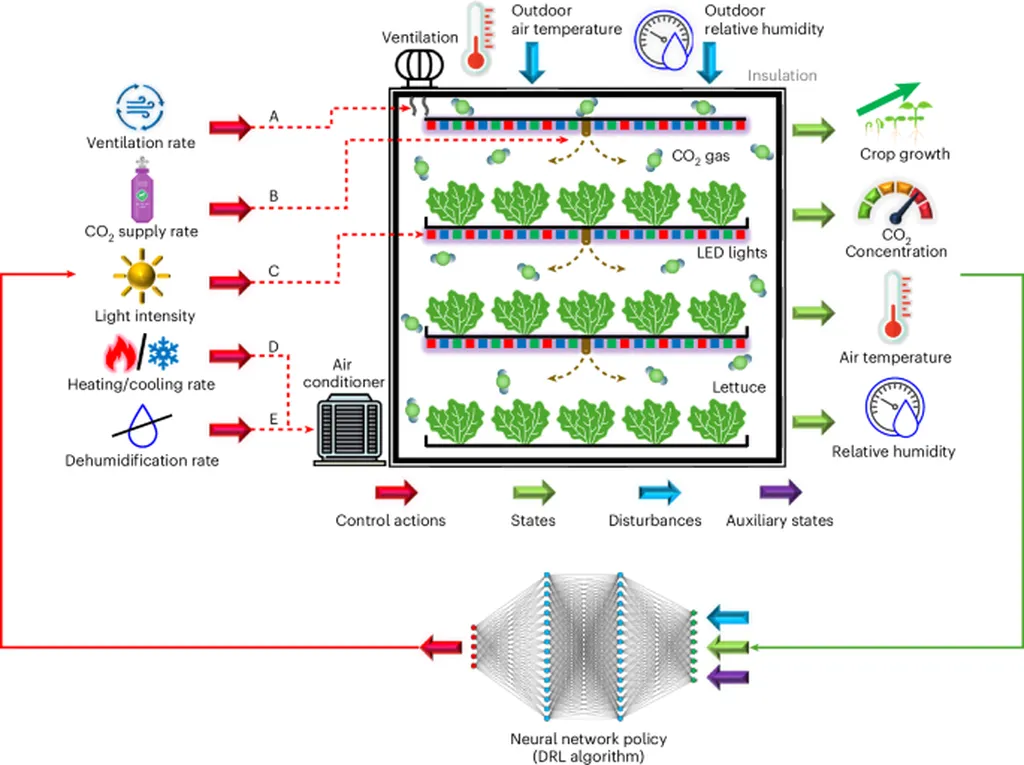In the heart of Zhejiang University, a team of researchers led by NIE Pengcheng from the College of Biosystems Engineering and Food Science has been tackling a persistent challenge in modern agriculture: optimizing the indoor microclimate of Venlo-type greenhouses during the sweltering summer months. Their innovative approach, published in the journal ‘智慧农业’ (translated as ‘Smart Agriculture’), combines computational fluid dynamics (CFD) with a multi-objective particle swarm optimization (MOPSO) algorithm, offering a promising solution to the energy-intensive and often inefficient mechanical ventilation strategies currently in use.
The team’s work addresses a critical gap in current greenhouse environmental control systems. “Traditional methods rely heavily on empirical knowledge and manual intervention, leading to imprecise control, substantial time delays, and high energy consumption,” explains NIE. To overcome these limitations, the researchers developed a joint optimization framework that dynamically adjusts to the complex, interdependent variables of temperature, humidity, and CO₂ concentration.
The study’s methodology is as rigorous as it is innovative. Environmental parameters were continuously collected via a network of sensors, providing real-time data to validate the CFD model. The team reconstructed the internal structure of the greenhouse with precision, setting appropriate boundary conditions based on empirical data. Using a finite volume-based solver, they simulated airflow dynamics and thermal fields, evaluating four grid resolutions to ensure accuracy without compromising computational efficiency.
The controllable parameters—fan outlet wind speed and cooling pad condensation temperature—were systematically varied within predefined ranges. To assess the greenhouse’s environmental quality and energy consumption under different control conditions, the team proposed three custom-defined objective functions: temperature suitability, CO₂ uniformity, and fan operating energy consumption. The MOPSO algorithm then conducted iterative optimization over the defined parameter space, recalculating the objective functions based on CFD outputs and identifying Pareto-optimal solutions through non-dominated sorting.
The results were impressive. The environmental field simulation accuracy of the CFD model was high, with an average relative error of just 5.7%. The optimization strategy allowed for closed-loop evaluation of the environment, balancing the conflicting objectives of environmental deviation and energy consumption. “The algorithm set the population size to 100 particles, and within the specified range of fan outlet wind speed and cooling pad condensation temperature, each particle iterates 5 times for optimization,” NIE elaborates.
The study’s findings have significant implications for the energy sector, particularly in the realm of agricultural technology. By optimizing mechanical ventilation strategies, greenhouses can reduce energy consumption while maintaining optimal growing conditions. This not only cuts costs but also enhances sustainability, a growing priority in an era of climate change and resource scarcity.
Looking ahead, the research team plans to further quantify the coupling effects and weight settings of each objective function, aiming to improve the overall optimization of the system. “This study complements the research on the systematic adjustment of greenhouse environmental parameters, while its closed-loop iterative features also enhance the simulation efficiency,” NIE notes.
The publication in ‘智慧农业’ underscores the relevance of this work to the broader field of smart agriculture. As the world grapples with the challenges of feeding a growing population sustainably, innovations like those developed by NIE and his team offer a beacon of hope. By harnessing the power of computational modeling and advanced optimization algorithms, we can create more efficient, resilient, and environmentally friendly agricultural systems. The future of farming is not just about growing crops; it’s about growing smarter.

